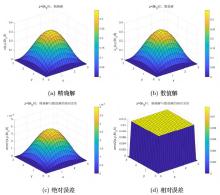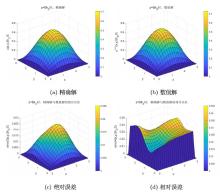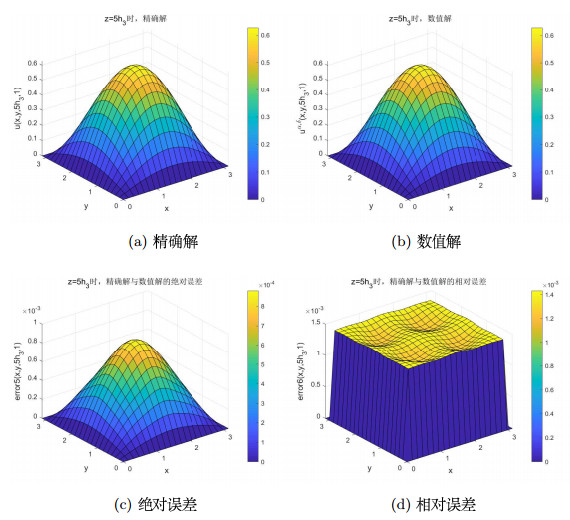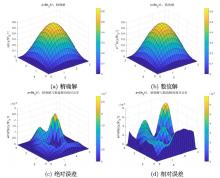| 1 |
Hazanee A , Ismailov M I , Lesnic D . An inverse time-dependent source problem for the heat equation. Appl Numer Math, 2013, 69: 13- 33
doi: 10.1016/j.apnum.2013.02.004
|
| 2 |
Zhang J L , Sheng T T . Dynamic system method for solving inverse problems in heat conduction equations. J Comput Sci Eng, 2014, 11: 413- 417
|
| 3 |
Min T , Zang S Q , Chen S N . Source strength identification problem for the three-dimensional inverse heat conduction equations. Inverse Probl Sci Eng, 2020, 28 (6): 827- 838
doi: 10.1080/17415977.2019.1665663
|
| 4 |
Wagner B M , Fernando M R . A comparison of some inverse methods for estimating the initial condition of the heat equation. J Comput Appl Math, 1999, 103 (1): 145- 163
doi: 10.1016/S0377-0427(98)00249-0
|
| 5 |
Khalid M , Salim M , Zaman F D . Initial inverse problem in heat equation with Bessel operator. Int J Heat Mass Tran, 2002, 45 (14): 2959- 2965
doi: 10.1016/S0017-9310(02)00019-4
|
| 6 |
Yang T , Zhen W W , Xie J X . Reversing inverse problem of source term of heat conduction equation. Adv Appl Math, 2019, 8 (1): 105- 110
doi: 10.12677/AAM.2019.81012
|
| 7 |
Damirchi J , Yazdanian A R , Shamami T R . Numerical investigation of an inverse problem based on regularization method. Math Sci, 2019, 13 (3): 193- 199
doi: 10.1007/s40096-019-0288-2
|
| 8 |
Tuan N H , Binh T T , Minh N D . An improved regularization method for initial inverse problem in 2-D heat equation. Appl Math Model, 2015, 39 (2): 425- 437
doi: 10.1016/j.apm.2014.05.014
|
| 9 |
Chen H , Frankel J I , Keyhani M . Nonlinear inverse heat conduction problem of surface temperature estimation by calibration integral equation method. Numer Heat Tr B-Fund, 2018, 73 (5): 263- 291
doi: 10.1080/10407790.2018.1464316
|
| 10 |
Joachimiak M , Ciaikowski M . Nonlinear unsteady inverse boundary problem for heat conduction equation. Archives of Thermodynamics, 2017, 38 (2): 81- 100
doi: 10.1515/aoter-2017-0011
|
| 11 |
Chapko R , Mindrinos L . On the non-linear integral equation approach for an inverse boundary value problem for the heat equation. J Eng Math, 2019, 119 (2): 255- 268
|
| 12 |
Ma K Y , Prakash P , Deiveegan A . Generalized Tikhonov methods for an inverse source problem of the time-fractional diffusion equation. J Eng Math, 2018, 108: 39- 48
|
| 13 |
Liu C J , Wei T . Moving boundary identification for a two-dimensional inverse heat conduction problem. Inverse Probl Sci En, 2011, 19 (8): 1139- 1154
doi: 10.1080/17415977.2011.603084
|
| 14 |
Lewis R W , Nithiarasu P , Seetharamu K N . Fundamentals of the Finite Element Method for Heat and Fluid Flow. New York: John Wiley & Sons, 2004: 152- 155
|
| 15 |
孔祥谦. 有限单元法在传热学中的应用. 北京: 科学出版社, 1998: 29- 31
|
|
Kong X Q . The Application of the Finite Element Method in Heat Transfer. Beijing: Science Press, 1998: 29- 31
|
| 16 |
Bourgeois H M , Kirsch A , Rundell W . Inverse problems for partial differential equations. Oberwolfach Reports, 2012, 9 (1): 611- 659
doi: 10.4171/OWR/2012/11
|
| 17 |
刘继军. 不适定问题的正则化方法及应用. 北京: 科学出版社, 2005: 132- 156
|
|
Liu J J . The Regularization Methods and Applications of Ill-posed Problems. Beijing: Science Press, 2005: 132- 156
|
| 18 |
Liu J J . Numerical solution of forward and backward problem for 2-D heat conduction equation. J Comput Appl Math, 2002, 145 (2): 459- 482
doi: 10.1016/S0377-0427(01)00595-7
|
| 19 |
Tikhonov A N , Goncharsky A V , Stepanov V V , Yagola A G . Solutions of Ill-posed Problems. Washington, DC: Winston, 1977: 188- 196
|
 )
)










































